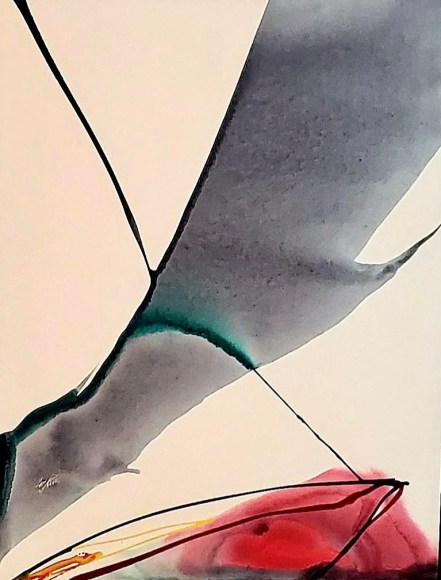Paul Jenkins (1923-2012) was an american abstract-expressionist painter who came to prominence in alongside other great artists of the movement in 1950s and 1960s New York City. Born in Kansas City, Missouri, Jenkins would spend most of his young life there until he moved to Struthers, Ohio to live with his mother in his teenage years. Following his graduation from highschool, Jenkins would enlist in the U.S Naval Air Corps during World War II. Upon his return from his service, he used the G.I Bill to move to New York City where he would study at the Art Students League of New York under Yasuo Kuniyoshi and Morris Kantor. It would be during this time that Jenkins would meet Mark Rothko, Lee Krasner, Jackson Pollock, and others.
Jenkins’ first solo exhibition in New York took place at the Martha Jackson Gallery in 1956. The Whitney Museum purchased the painting “Divining Rod” from the exhibition. Jenkins came to prominence in both the United States and Europe for his early abstractions during the 1950s and sold paintings to collectors like Peggy Guggenheim who would become a longtime client of his.
In the 1960s Jenkins began to transition away from oil on canvas to acrylic. Jenkins would also begin to use an ivory knife, a tool that would go on to become a key tool in the creation of his works. During this time Jenkins’ works would be shown worldwide. In 1963 he took over Willem De Kooning’s loft studio in Union Square, where he would work until the end of the year 2000.
For the remainder of his career, Jenkins would explore abstraction with his sculptures and paintings. He would remain well renowned for his work with watercolors and acrylic paint until his death in 2012.

